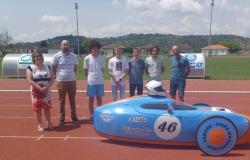A scientist has imagined the consequences of stopping the Earth’s rotation. A catastrophic scenario that would quickly make the planet uninhabitable or even cause the human species to disappear instantly.
What would happen if the Earth suddenly stopped rotating? This is the question that scientist Joseph Levy, associate professor of Earth and environmental geosciences at Colgate University in New York State (United States), has been investigating. However, two scenarios can be considered: the hypothesis of an abrupt stop and that of a gradual stop.
The hypothesis of a sudden stop
The first consequence of a sudden stop in the Earth’s rotation would be the absence of light and radiation from the sun for half of the planet. A scenario which would therefore plunge part of the planet into complete darkness, explains Joseph Levy to Business Insider. In the hypothesis of the sudden cessation of the rotation, the projection of living beings would also have to be taken into account. Indeed, the rotation of the earth occurs at around 1,600 km/h at the equator, a sudden stop would project us, with the principle of inertia, towards the east. A shock that would throw us like common stones with almost no chance of surviving.
According to Joseph Levy, we would also have to imagine a sudden displacement of water. We could then witness the most powerful tidal waves that the Earth has ever known. “The water would also feel this sudden acceleration.” Finally, the scientist does not give much thought to the skin of human constructions or plants that would also suffer the full force of the sudden stoppage of rotation. “Earth materials are resistant to compression, but not to tension,” he explains.
The hypothesis of a gradual shutdown
If the Earth’s rotation were to gradually stop, the fate of humans would not be much better. “During the year, as the Earth revolved around the Sun, half of the planet would be in the dark and the other half in full light, but half would constantly change during the year,” the scientist explains.
So, instead of lasting half a day, the continuous sunshine time would be 6 months. The consequences would be dramatic. Indeed, continuous sunshine would burn vegetation and crops when the water eventually evaporates with the heat. “The uninterrupted sun would roast the crops and evaporate a large part of the water on this half of the globe,” announces Joseph Levy. Conversely, half of the globe plunged into darkness would not be able to grow any plants and would see the water turn into ice. In short, rising water levels, extreme heat and famine would be the daily lives of what remained of humanity.






